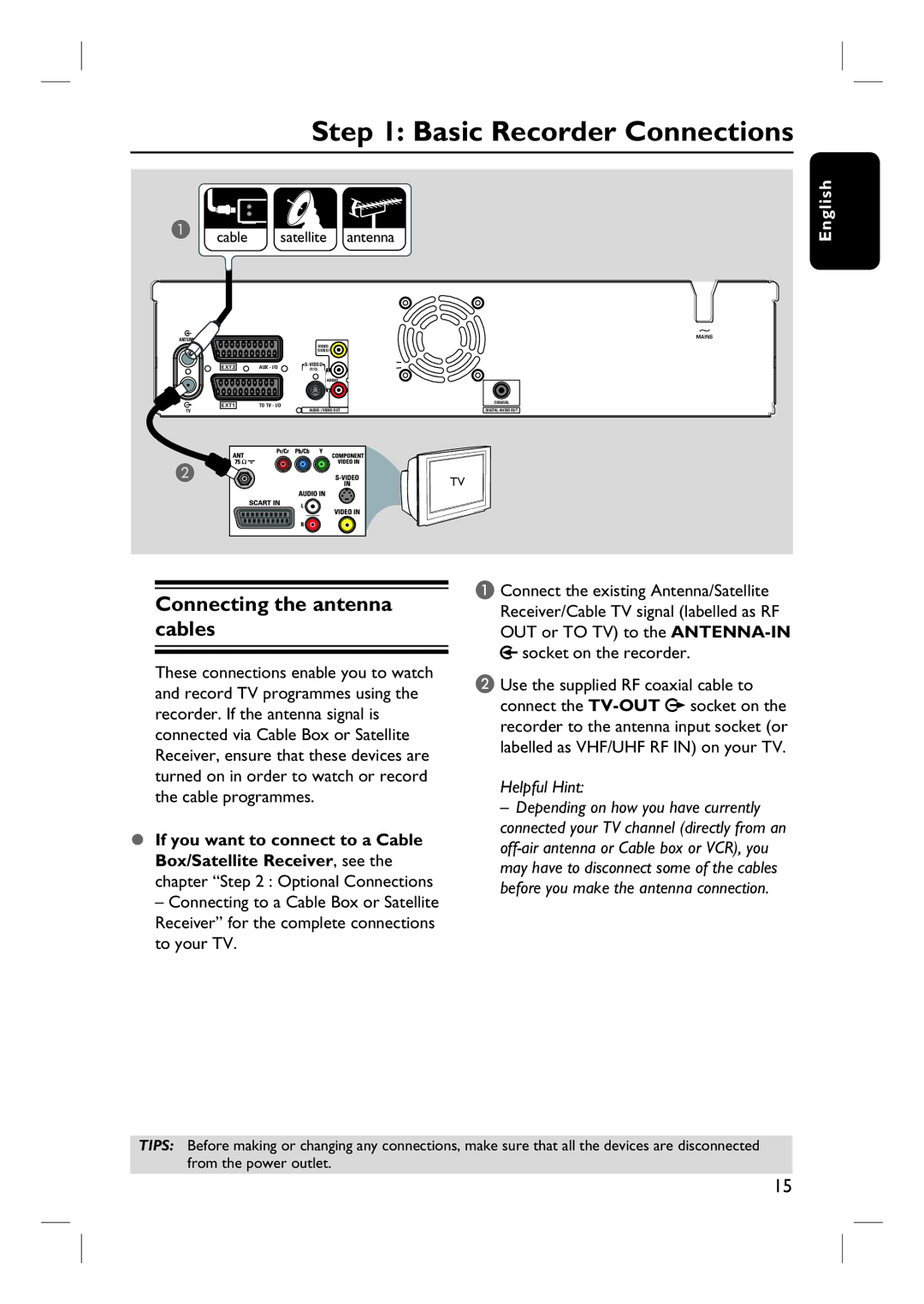
Step 1: Basic Recorder Connections
A |
|
|
|
|
|
cable |
| satellite |
| antenna | |
|
|
|
|
|
|
|
|
|
|
|
| ~ |
ANTENNA |
|
|
|
|
| MAINS |
|
|
| VIDEO |
|
|
|
|
|
| (CVBS) |
| Y |
|
EXT2 | AUX - I/O |
|
|
| ||
(Y/C) | L |
| PB |
| ||
|
|
|
| |||
|
|
| AUDIO |
|
|
|
|
|
| R |
| PR |
|
EXT1 | TO TV - I/O |
|
| AUDIO | COMPONENT | COAXIAL |
|
| VIDEO |
| |||
TV |
| AUDIO / VIDEO OUT | AUDIO / VIDEO OUT 1 | DIGITAL AUDIO OUT | ||
B | TV |
|
English
Connecting the antenna cables
These connections enable you to watch and record TV programmes using the recorder. If the antenna signal is connected via Cable Box or Satellite Receiver, ensure that these devices are turned on in order to watch or record the cable programmes.
If you want to connect to a Cable
Box/Satellite Receiver, see the chapter “Step 2 : Optional Connections
–Connecting to a Cable Box or Satellite Receiver” for the complete connections to your TV.
A Connect the existing Antenna/Satellite Receiver/Cable TV signal (labelled as RF OUT or TO TV) to the ![]() socket on the recorder.
socket on the recorder.
B Use the supplied RF coaxial cable to connect the ![]() socket on the recorder to the antenna input socket (or labelled as VHF/UHF RF IN) on your TV.
socket on the recorder to the antenna input socket (or labelled as VHF/UHF RF IN) on your TV.
Helpful Hint:
–Depending on how you have currently connected your TV channel (directly from an
TIPS: Before making or changing any connections, make sure that all the devices are disconnected from the power outlet.
15
